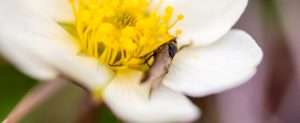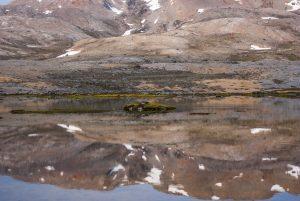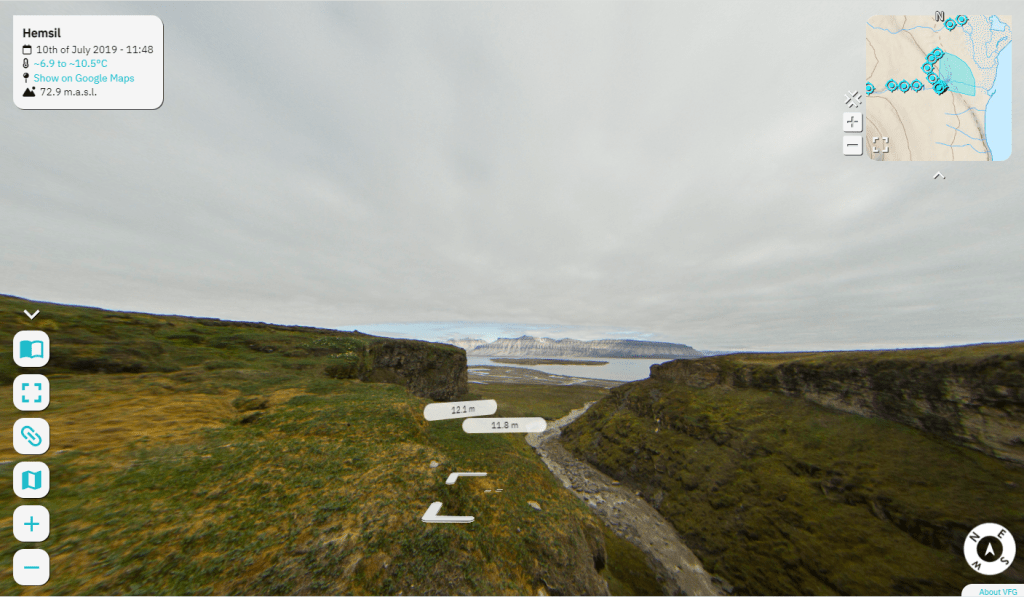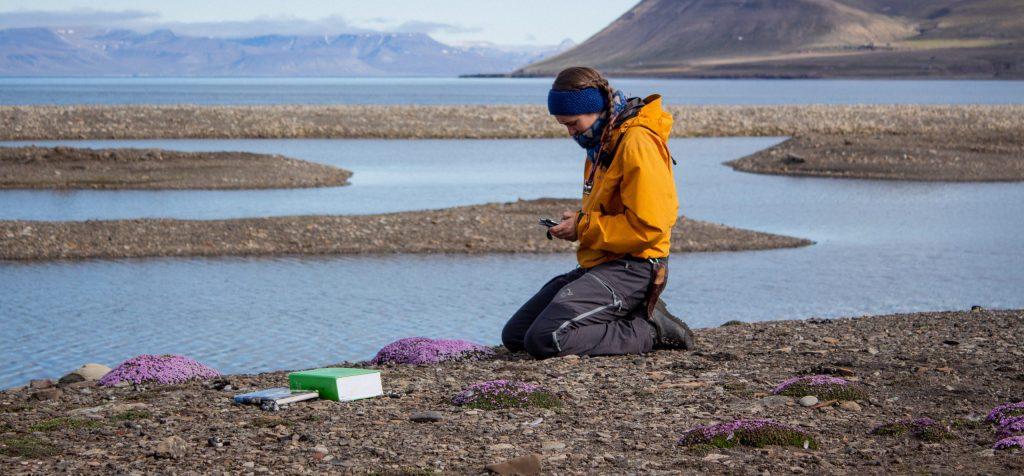• Learning Arctic Biology •
Want to learn about Arctic terrestrial biology?
Video: Tina Dahl and Marcos Poricres
• Browse by topic •
• Digital Tools •
360° Virtual Field Guides
Explore a variety of locations and learn about its biology, history and more. All in 360 degrees!
ArtsApp - Digital Key
A digital key for Svalbard’s flora, with specific keys for vascular plants and grasses.
Read about...

Pollinators and their importance in the Arctic environment
Globally, most flowering plants reproduce sexually and are pollinated by insects or other animals rather than abiotic pollen vectors such as wind. Plant-pollinator interactions are
LGM and postglacial migration
During the Last Glacial Maximum (LGM), biodiversity was significantly reduced throughout the Arctic (Willerslev et al., 2014); however, the extent of this biodiversity loss varied. The

Arctic Freshwater Habitats
The arctic freshwater environment experienced dramatic climatic shifts during the Holocene (10,000 years ago to present) and Pleistocene, which has had enormous effects on the
Parasitic fungi
Parasitic and pathogenic fungi obtain their nutrition from other living organisms, and have a negative effect upon the individuals – hosts – they are parasites
Invertebrate habitats in Svalbard
Invertebrates in Svalbard can be found just about anywhere, flying, under rocks, in the soil, crawling on the vegetation, in the streams and ponds, even

Ancient DNA reveal history
DNA, like pollen, accumulate in sediments Paleoenvironmental reconstructions have traditionally been based on fossil records and pollen sequences in lake sediments. However, in the last
Current status of freshwater systems in Svalbard
There has recently been published a summary of the available knowledge of freshwater systems in Svalbard. With permission from the authors (John E. Brittain, Ann
Climate change and polar invertebrates
Climate change is predicted to have a significant impact on invertebrate communities. Increases in temperature may increase development rates. This as well as changes in
Viruses
What is a virus? Viruses are infectious agents that replicate exclusively within a living cell. Viruses can infect all types of organisms, from animals and
Fungi in Svalbard
A large number of mushroom species grow in Svalbard. Most are small, some are poisonous, while others are edible and tasty. Fungi have most of
What are bryophytes?
Evolutionary origin Bryophytes belong to the embryophytes, which include all land plants. Evidence from structural, biochemical, and molecular data supports the view that bryophytes and all
Systematics of fungi
Modern fungal systematics is based upon genetic analysis. However, and structure of the hyphal cells are also important. Below you will find an overview of
Microbiology in the Arctic
Since the turn of the previous century, when Arctic explorers began to return samples of microbes for culture and study, our understanding of the microbiology
Biogeography of bryophytes
History The Pleistocene is the world’s recent period of repeated glaciations between 2.5 million to 11700 years ago. More than 20 cycles of glaciation occurred
Ecosystem role of bryophytes
Bryophytes have many important ecosystem functions in the Arctic. These include: Regulation of hydrology In many habitats, bryophytes control soil and vegetation hydrology (Beringer et
Bryophyte habitats
Bryophytes are found throughout the world from the harsh environments of Antarctica to the lush conditions of the tropical rainforests. Despite their small size, they
Useful learning resources

bioCEED resource for learning statistics, tutorials for the statistical computing language R and more!
How do you start with academic writing? This is the prefect resources for those who are about to write their first thesis/poster/essay etc. or looking for new tips when it comes to academic writing.
Svalbox is all about Svalbard geology. Svalbox aims to compile and acquire key data sets and publications to provide an interactive 3D geoscientific database of Svalbard.
The UNIS Executable Books page provides an overview of all eBooks available and/or used for teaching at the University Centre in Svalbard (UNIS).










